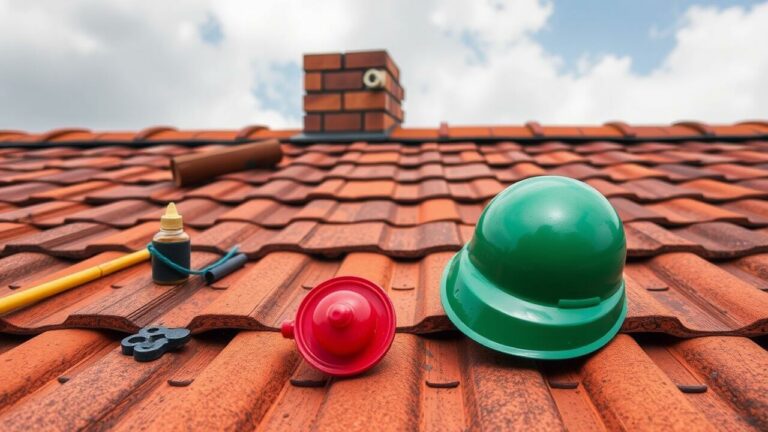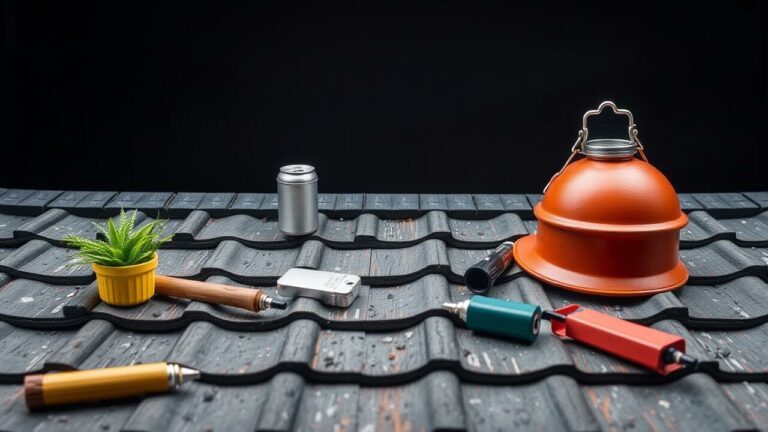Roof Leak Detection and Repair San Diego
Choosing the Right Repair Material
Choosing the right materials for roof leak repairs is absolutely vital—it’s more than just a patch; it’s about finding a solution that holds up against time and nature’s whims. A mélange of factors dances into play here: the type of roof at hand, how bad that pesky leak really is, and what Mother Nature has in store for your region. Think about asphalt shingles—they can charm their way onto many residential rooftops—but when stormy skies loom with heavy rains and fierce winds, metal roofing struts in like a hero ready to face the tempest.
Yet that’s not all; oh no! The repair materials you opt for don’t merely seal off leaks; they also weave into the intricate tapestry of insulation and energy efficiency. It becomes an art form to select materials that harmonize with what already exists overhead—this ensures a seamless union while mitigating potential headaches down the road. When you nail it on material selection, you’re not only slapping a band-aid on an immediate issue but fortifying the entire roofing ecosystem for years to come. So as you ponder your choices, remember this balancing act between quick fixes and steadfast durability—it’s crucial in crafting a sound shelter over your head!
Options for Different Roof Types
A myriad of roofing materials exists, each meticulously crafted to meet the unique demands posed by various roof types. When it comes to flat roofs, choices abound—think single-ply membranes that stretch taut against rain’s relentless assault or built-up roofing systems layered like a protective shield, both engineered for exceptional water resistance and robust durability. On the other hand, pitched roofs strut their stuff with an array of materials: from classic asphalt shingles that sing with familiarity to sleek metal panels shining under sunlight’s embrace or timeless slate that whispers elegance—all presenting their own visual flair and practical advantages.
Now consider tile roofs, a staple in coastal havens; they boast remarkable insulation and enduring life spans but might just demand extra structural fortitude due to their hefty nature. And let’s not forget wood shakes—they evoke rustic charm yet call for diligent upkeep lest they fall prey to rot’s creeping threat. Meanwhile, green roofing systems are surging in popularity as champions of energy efficiency and eco-friendliness—an innovative nod towards sustainability!
Navigating this kaleidoscope of options is paramount; it requires a keen eye on factors like climate quirks, roof pitch angles, and the architectural soul of the building itself. A thoughtful evaluation ensures proper installation while setting the stage for long-lasting performance—ultimately minimizing future leaks’ unwelcome visits and sparing you from those pesky repair bills down the line!
| Roof Type | Material | Benefits | Drawbacks |
|---|---|---|---|
| Flat Roof | Single-Ply Membrane | Lightweight, excellent water resistance | Can be prone to punctures |
| Pitched Roof | Asphalt Shingles | Cost-effective, easy to install | Shorter lifespan compared to others |
| Tile Roof | Clay or Concrete Tiles | Durable, excellent insulation | Heavy, may require additional support |
| Wood Roof | Wood Shakes | Aesthetic, natural insulator | Regular maintenance required to prevent rot |
| Green Roof | Vegetative Layer | Energy-efficient, eco-friendly | Requires structural support and maintenance |
Cost Factors for Roof Leak Repair
A multitude of factors intertwine to shape the total cost of roof leak repair, weaving a complex tapestry that can leave homeowners scratching their heads. The severity of the damage reigns supreme as a decisive element in this financial equation. A mere drip might just demand a hasty patch job, while a catastrophic breach could spiral into an extensive overhaul or even an entire roofing makeover. Labor costs? Oh, they dance to their own rhythm—swelling and shrinking based on how intricate the repair is and the seasoned expertise of the contractor at hand.
Then there’s geography—a significant player on this stage, especially when we zoom in on San Diego’s unique landscape. Market rates fluctuate like tides, influenced by local supply and demand for skilled laborers who know their craft inside out.
Material selection also throws its hat into the ring as another crucial determinant of expenses. Asphalt shingles, tiles, metal—each type comes with its own set of price points and requires tailored approaches for repairs that vary dramatically from one material to another. Homeowners mustn’t overlook ancillary costs lurking in the shadows—permits, inspections, not to mention potential upgrades designed to bolster durability against future leaks.
To navigate this labyrinth and land a precise estimate without falling prey to hidden pitfalls, it’s wise for homeowners to gather several quotes from trustworthy contractors. This way lies clarity; each estimate laid bare will illuminate what exactly is included within those numbers!
Understanding Pricing and Estimates
When it comes to the costs associated with fixing a roof leak, diving into the myriad of factors that sway pricing is crucial. The degree of damage can often steer the ship—more extensive harm usually translates to greater material and labor demands. Homeowners must also take into account their roof’s age and the type of materials involved; these aspects can dramatically alter how complicated—or straightforward—the repair process might be, potentially unveiling hidden layers of additional work.
Gathering detailed estimates from several contractors becomes an essential step in this journey, shedding light on market rates amidst the uncertainty. It’s wise for potential clients to request quotes that meticulously itemize labor, materials, and any extra expenses lurking beneath the surface. A well-detailed estimate not only illuminates possible trouble spots but empowers homeowners to navigate their roofing dilemmas with clarity and confidence.
Ensuring Long-term Protection
Ah, the delicate dance of roof preservation—the art of preventive measures! How crucial they are in safeguarding the very integrity that shelters us from nature’s whims. Picture this: regular inspections acting as vigilant sentinels, catching those pesky minor issues before they morph into monstrous leaks that threaten our cozy abodes. Homeowners ought to pencil in roof check-ups a minimum of twice yearly—think spring’s awakening and fall’s graceful descent—as prime times for these assessments.
Now, during these meticulous inspections, one must not overlook the nuances; flashing and seals demand scrutiny, while shingles or tiles should be examined with an eagle eye. Tending to those small repairs without delay can yield remarkable dividends, dramatically extending a roof’s lifespan like a well-tended garden flourishing through seasons.
But wait! Inspections alone won’t cut it; oh no! Proper maintenance rituals are imperative for bolstering your roof’s fortitude against leaks. Keeping gutters free from debris is akin to ensuring smooth water flow—a vital act that diminishes the risk of pooling water plotting damage beneath your feet. And let us not forget about tree companions lurking nearby; keeping their branches elegantly trimmed is essential to ward off any rogue limb intent on wreaking havoc upon your roofing material.
Investing time and effort into these seemingly simple tasks doesn’t just shield the roof—it elevates the overall safety and value of your cherished property too. What a splendid return on investment!
Maintenance Tips to Prevent Future Leaks
Ah, the roof—a silent sentinel of your home’s fortress! Regular inspections? Absolutely vital for preserving its steadfast integrity. Homeowners ought to elevate this task to a top-tier priority, ideally engaging in these crucial checks no less than twice per year—particularly as seasons shift and those rains come pouring down. A meticulous eye on shingles, flashing, and gutters can unveil lurking issues before they spiral into chaos.
Now picture this: debris littering the rooftop like confetti from a forgotten celebration. Clearing it away isn’t just aesthetic; it’s an imperative act that ensures gutters flow freely, preventing water from pooling ominously where it shouldn’t be. And let’s not forget about those minor repairs—address them with urgency! A crack sealed or a shingle replaced at first glance may seem trivial but could spell disaster if neglected.
And while you’re at it, wield those pruning shears like a warrior against overhanging trees that threaten to shower your roof with unwelcome debris or worse—puncture damage! This ritual of regular maintenance doesn’t merely extend your roof’s lifespan; oh no—it fortifies the very essence of safety and elevates the value of your abode!
Hiring a Qualified Roofing Contractor
Navigating the labyrinth of roofing contractors is a quest that can make or break your repair experience. First things first: tap into your network—friends, family, neighbors—those who’ve danced with successful roofing projects before you. Their tales can be goldmines of insight! Then, plunge into the digital sea of online reviews; they might just illuminate a contractor’s standing in the community.
But hold on—don’t get swept away by glowing testimonials alone. Scrutinize their expertise with specific roofing materials because this factor could spell the difference between a patch job and a masterpiece.
Before sealing the deal, ensure that your chosen contractor boasts both license and insurance—a safety net for any unforeseen mishaps during repairs. And hey, why settle for one estimate? Gather several quotes to truly grasp what’s at stake and compare apples to apples (or shingles to shingles). A trustworthy contractor will lay all their cards on the table: clear pricing, an outline of necessary steps, and a timeline that won’t leave you guessing when you’ll have that roof over your head once more!
What to Look for in a Professional
When it comes to selecting a contractor for roof leak repairs, it’s absolutely vital—no, imperative—to scrutinize their qualifications and experience. Dive deep into the credentials! Seek out professionals who possess the necessary licenses and insurance coverage; these aren’t mere formalities but rather shields against potential pitfalls. A valid license? Ah, that’s your assurance of the contractor’s compliance with local regulations—a badge of honor in this intricate dance of construction!
And let’s not overlook insurance—it serves as a safety net for both parties involved: the contractor and you, the homeowner. It mitigates those lurking liabilities that might rear their heads during repair work.
Now, consider how long they’ve been at this game. Experience isn’t just a number; it often translates into an astute understanding of diverse roofing systems coupled with savvy repair techniques honed over time.
But wait! There’s more to unravel here—reviews and references are your golden tickets to uncovering a contractor’s reliability and craftsmanship. Tap into previous customers’ experiences like nuggets of wisdom—they’ll reveal satisfaction levels and shed light on the quality (or lack thereof) of repairs executed.
Professional affiliations? Yes, indeed! Memberships in industry organizations can hint at a dedication to continuous learning and adherence to best practices—the lifeblood of any reputable tradesperson.
Lastly, do ensure that you receive a detailed estimate from your prospective contractor. This should encompass everything: scope of work, materials slated for use, projected timelines—you name it! Such transparency is not merely about numbers; it cultivates trust while paving pathways for open communication—a cornerstone needed for navigating through what could be quite turbulent waters during the repair process.
The Role of Insurance in Roof Repairs
Insurance, oh how it weaves its intricate web around the often-daunting world of roof repairs! Homeowners—listen closely! It’s time to dive into that policy of yours and unravel the mysteries lurking within. Coverage for roof damage can swing wildly from one plan to another, so don’t be caught off guard. Typically, homeowners’ insurance swoops in to save the day when wind and hail wreak havoc on your shingles, but beware—the fine print might reveal exclusions tied to particular materials or unexpected incidents.
Now, here’s where things get a bit tricky: documenting every nook and cranny of that damage is not just advisable; it’s essential! Get those photos snapped and reports filed without delay because swift claims processing could mean you’re back under a sturdy roof sooner than you think.
But wait—there’s more! The claims process isn’t exactly a walk in the park; it can be labyrinthine. That’s where enlisting a skilled roofing contractor comes into play—a true ally in this quest. These pros can whip up detailed estimates outlining all necessary repairs, arming homeowners with precise information for their claims submissions. Insurance adjusters? They often lean heavily on these professional assessments as they sift through the merits and values of each claim like detectives piecing together clues.
So take heed: grasping the ins-and-outs of your coverage while keeping an eye on potential out-of-pocket costs empowers homeowners to make savvy decisions when tackling pesky roof leaks and securing those all-important repairs. Navigate wisely through this maze—you’ve got this!
Navigating Claims for Roof Damage
Homeowners grappling with the aftermath of roof damage often find themselves wading through a labyrinthine world of insurance claims. It’s imperative to grasp the intricacies of your policy to optimize potential compensation—after all, knowledge is power in this tangled web. Most homeowners’ insurance policies do cover sudden and accidental roof mishaps, yet discerning between what’s covered and mere wear and tear can be a slippery slope. To bolster your claim, meticulously document every detail: snap photos like a detective piecing together evidence, jot down descriptions that paint an unmistakable picture.
When it comes time to engage with your insurance company, arm yourself with diligence and an organized approach. Don’t delay; file that claim pronto! Include every shred of relevant information and documentation you can muster. Brace yourself for an adjuster’s inspection—this might entail scrutinizing your roof’s condition as well as assessing the extent of the damage inflicted upon it. Keep meticulous records of all communications; follow-ups are not just recommended—they’re essential! This proactive stance doesn’t merely expedite the process; it significantly heightens your chances for a favorable resolution amidst the chaos.
- Be clear about your policy’s terms and coverage limits to avoid surprises later.
- Gather estimates from reputable roofing contractors to support your claim for repair costs.
- Stay in regular communication with your insurance adjuster to ensure your claim remains a priority.
- Educate yourself about local building codes and regulations, as they may affect your claim approval.
- Review your insurance company’s response and make note of any discrepancies or areas needing clarification.
- Consider consulting with a public adjuster if you feel overwhelmed or believe your claim is not being handled fairly.
- Keep a timeline of events related to your claims process to reference if any issues arise.
Conclusion
Detecting and repairing roof leaks effectively is absolutely vital for your home’s structural integrity—it’s not just a nicety, it’s a necessity! Diving into the myriad of repair materials and techniques at your disposal lets homeowners make savvy choices tailored precisely to their unique roof types. But hold on—regular maintenance practices? They’re the unsung heroes in this saga, playing an essential role in thwarting future leaks and protecting your investment from the capricious whims of Mother Nature.
Now, here’s where things get interesting: hiring a qualified roofing contractor isn’t merely about fixing shingles; it’s about ensuring that every repair meets industry standards with precision. This means peace of mind—a rare commodity for many homeowners! And let’s not forget navigating through the insurance labyrinth related to roof repairs; knowing how this process works can ease some of those pesky financial strains that come with unexpected damage. By prioritizing these crucial elements, homeowners can significantly bolster their roofs’ longevity and performance while crafting a safe haven that feels just right for comfortable living.
FAQS
How can I tell if my roof has a leak?
Ah, the telltale signs of a sneaky roof leak! Picture this: water stains gracing your ceilings or walls like unwelcome art, damp spots lurking in the attic shadows, mold making an appearance where it shouldn’t be, and shingles that are either missing or looking worse for wear.
What materials are best for repairing a roof leak?
The ideal materials dance to the tune of your specific roof type; however, some common contenders include roofing felt (the unsung hero!), rubber membrane (flexible yet tough), asphalt shingles (a classic choice), and trusty sealants that promise to hold everything together.
How much does it typically cost to repair a roof leak in San Diego?
Ah, costs—those fickle beasts! Expect quite the range depending on how extensive the damage is, what kind of roofing material you’re dealing with, and those labor fees that can creep up on you. Homeowners might find themselves shelling out anywhere between $300 to $1,500—or even more!
How can I prevent future roof leaks?
Prevention is key! Embrace regular maintenance rituals—think cleaning gutters as if they were sacred vessels, inspecting your rooftop realm for hidden threats, and tackling minor issues before they bloom into major headaches.
What should I consider when hiring a roofing contractor?
Seek out qualifications like licensing and insurance as essential armor against mishaps. Don’t forget references from previous conquests and customer reviews that sing praises—or cautionary tales—to ensure you’ve got a reputable warrior at your side for all things roof repair.
Will my homeowner’s insurance cover roof leak repairs?
Ahh… insurance—the great unknown! Coverage often sways with policy specifics and the cause behind that pesky leak. Your best bet is to chat with your insurance provider so you can uncover just what protection awaits for any potential rooftop calamities.







